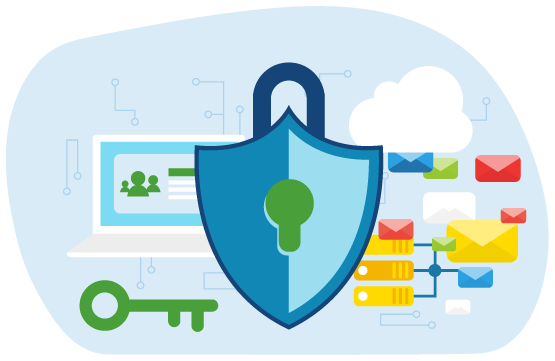
Author: Amy Nicholas
Have you been approached about having your Part C program participate in a statewide integrated data system initiative, such as an early childhood integrated data system (ECIDS) or statewide longitudinal data system (SLDS)? Or is your program’s participation already in the works?
If your answer to either of those questions is yes, then being familiar with the data privacy requirements under the Individuals with Disabilities Education Act (IDEA) and the Family Educational Rights and Privacy Act (FERPA) is critical. As a Part C leader, you should be knowledgeable about the provisions, protections, and exceptions in both pieces of legislation. Fortunately, there are some good examples of IDEA and FERPA references in other states’ ECIDS and SLDS data sharing agreements to learn from. (This blog post shares one of them, so keep reading!)
In September 2023, DaSy co-hosted the webinar Navigating IDEA and FERPA To Protect Privacy in Today’s Early Childhood World with partners from the U.S. Office of the General Counsel, U.S. Department of Education, Privacy Technical Assistance Center (PTAC), and Early Childhood Technical Assistance Center (ECTA) to answer commonly asked questions about IDEA, FERPA, and data sharing. A key takeaway from the webinar was: Before embarking on a data sharing, linking, or integration initiative, review both IDEA and FERPA thoroughly. Also important is to review IDEA first because while IDEA incorporates FERPA privacy protections and exceptions, it includes additional protections, requirements, and exceptions beyond FERPA (such as early childhood transition opt-out).
Questions to ask about IDEA and FERPA
I know what you’re thinking–IDEA and FERPA are both very lengthy pieces of legislation! Start by focusing on finding the information you need in each to be able to answer fundamental questions that will help you and your partners develop a compliant data sharing agreement. Reviewing the webinar Navigating IDEA and FERPA To Protect Privacy in Today’s Early Childhood World is a good place to start for finding answers to questions like:
- What are the authorized purposes for sharing personally identifiable information (PII) in children’s Part C records (i.e., exceptions for disclosing PII)?
- What is the definition of a “participating agency” authorized to have access to PII?
- When do privacy provisions apply to children who are receiving or who have received Part C services?
- What does consent mean prior to the disclosure of PII, and is parent/guardian consent required for the type of data sharing being pursued?
- How does access to shared PII need to be monitored?
Things to keep in mind
- You’ll want a clear understanding of what data are going to be shared and how the data will be used (and by whom) before reviewing how IDEA and FERPA regulations apply.
- Pay close attention to terminology across IDEA and FERPA. Some terms are used similarly in both pieces of legislation (for example, child vs. student; early intervention record vs. education records). However, some terms may have nuanced differences that are important to discern and understand (e.g., the definition of participating agency).
- If you determine the data sharing is permissible under IDEA and FERPA, be sure to include language in any subsequent data sharing agreement that explicitly states the purpose and benefits, as well as an explanation of how the purpose and benefits together meet the data privacy provisions. The draft of Draft of Utah’s Part C/ECIDS data sharing agreement (also available in the callout box above) is a good example. Also, be sure to have a legal representative authorized to provide counsel to your Part C program review any agreement before signing.
DaSy Resources
- Navigating IDEA and FERPA To Protect Privacy in Today’s Early Childhood World
- DaSy co-hosted another privacy webinar with ECTA and PTAC on September 11, 2024: Unlocking Early Childhood Data Privacy: Latest Trends and Insights and What You Need to Know
- Data Sharing Partnerships Improve Systems (DaSy, ECTA & NCHAM)
- Data Sharing Agreement Template: Examples from the Early Hearing Detection, and Intervention Program (EHDI) and Early Intervention Programs
- Linking EHDI and Part C Data Webinar
- Data Sharing Agreement Checklist for IDEA Part C and Part B 619 Agencies and Programs
Other Resources
- IDEA and FERPA Crosswalk: A side-by-side comparison of the privacy provisions under Parts B and C of the IDEA and FERPA
- Understanding the Confidentiality Requirements Applicable to IDEA Early Childhood Programs FAQ
About the Author

Amy Nicholas is a DaSy Technical Assistance Specialist with AnLar, LLC. She has provided training and other support to numerous state agencies around early childhood data analysis and use, data visualization, reporting, data integration, and system design and development.
Published October 2024.


